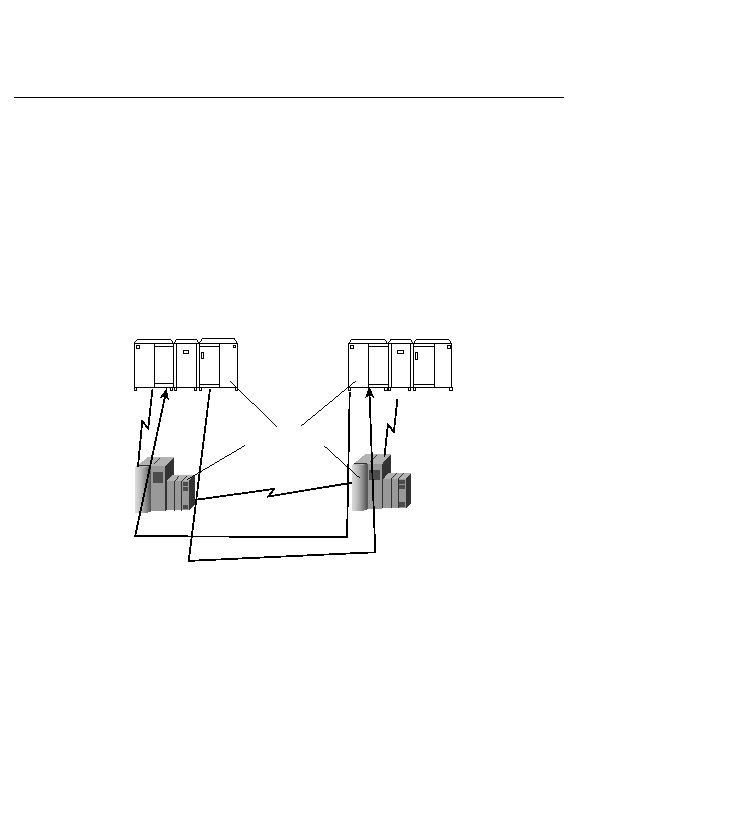
control layer. These "routes" are different from the TCP/IP routes used with Cisco routers, so
they need to be discussed in detail:
SNA network. Explicit routes provide a path between two subarea nodes. These are
equivalent to static routes in an IP network. Like IP static routes, they must be configured
in both directions because they are half-duplex paths mapped to physical communication
lines connecting the nonadjacent subareas. Figure 12-12 depicts this. Explicit routes need
to be statically defined in all the subarea nodes they cross. For mainframe A to
communicate with mainframe B, explicit routes must be configured in both directions.
or nonadjacent. This is considered a fixed path between subarea nodes. An analogy is an
SVC, or a logical connection between the nodes. Virtual routes can be assigned priorities
of high, medium, or low (not to be confused with Cisco router priority queuing). When
there are messages to send, they can be prioritized so that the most important messages
will be in the high-priority queue. They are dependent on the explicit routes being
configured in both directions first.
transmission group (TG). A TG consists of one or more links between two adjacent nodes.
No matter how many links make up a TG, it appears to the path control layer as a single
link between two adjacent subarea nodes. This provides for availability. In Figure 12-13,
if one of the links fails in either TG 1 or TG 255, the TG remains operative. The range for
TGs is from 1 to 255.